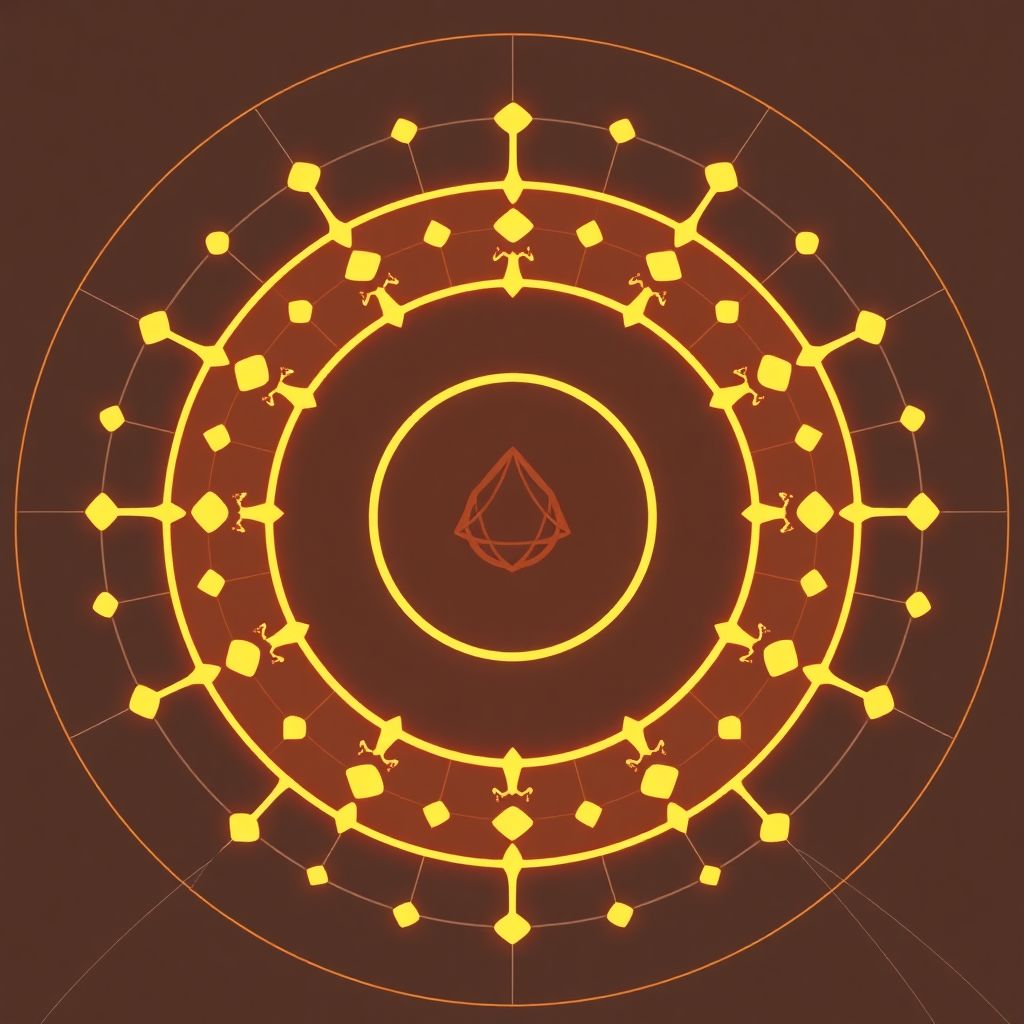Circle Unveils Arc Testnet, Attracting Financial Giants BlackRock, Goldman Sachs, Visa, and Mastercard
Circle, the issuer of the second-largest stablecoin by market cap, has officially launched the public testnet for Arc — a cutting-edge layer-1 blockchain aimed at revolutionizing digital finance. Designed to act as a global financial backbone, Arc promises fast settlement, predictable dollar-based transaction fees, and seamless integration with Circle’s USDC stablecoin.
The Arc testnet has already garnered support from an impressive roster of over 100 institutions across the financial and technology sectors. Notable early participants include global heavyweights such as BlackRock, Goldman Sachs, Visa, Mastercard, and State Street. With this initiative, Circle seeks to bridge traditional finance and Web3 infrastructure, fostering a more interconnected and efficient global economy.
Circle’s CEO Jeremy Allaire described the Arc testnet as the beginning of a new era in internet-native financial infrastructure. “With Arc’s public testnet, we’re seeing remarkable early momentum as leading companies, protocols, and projects begin to build and test,” Allaire stated. He emphasized the scale of these participants, pointing out that together they serve billions of users and manage assets and transactions worth hundreds of trillions of dollars.
Arc’s architecture is purpose-built to serve as a high-performance blockchain optimized for financial applications. It offers sub-second finality — drastically reducing the time it takes to confirm transactions — and features optional privacy tools for businesses requiring discretion. The network is designed around Circle’s USDC, which functions as both a stablecoin and the native gas token for transaction processing.
The platform’s reach extends across continents and industries. From traditional banks to digital-native fintech startups, Arc is crafted to serve as a foundational layer for applications in lending, capital markets, global remittances, and foreign exchange. Institutions like Apollo Global Management, BNY Mellon, Deutsche Bank, and Intercontinental Exchange have also joined the testnet, further validating Arc’s potential to serve as a bridge between legacy financial systems and blockchain innovation.
Arc is not limited to finance alone — it’s being developed as a versatile infrastructure layer that also supports emerging technologies. Integrations with popular developer tools and platforms such as MetaMask, Fireblocks, Chainlink, LayerZero, and Alchemy are already in place. Cross-chain operability is enabled through bridges like Wormhole and Stargate, ensuring that Arc is interoperable across the wider blockchain ecosystem.
In a forward-looking move, Circle has also included artificial intelligence in its roadmap. The integration of Anthropic’s Claude Agent SDK will provide developers with AI-powered tooling, streamlining the creation and deployment of new applications on the Arc network.
One of Arc’s defining features is its support for fiat-pegged tokens and tokenized assets. The testnet already includes stablecoin issuers from seven countries, including JPYC from Japan, BRLA from Brazil, MXNB from Mexico, and PHPC from the Philippines. These collaborations highlight Arc’s ambition to serve as a truly global financial platform, facilitating cross-border liquidity and FX settlement.
Additionally, Circle has emphasized Arc’s role in enabling institutional-grade blockchain infrastructure. The network is tailored to meet the compliance and security needs of enterprise clients, while also remaining accessible to Web3-native developers. This dual approach makes Arc a versatile solution for a wide range of use cases — from stablecoins and asset tokenization to DeFi protocols and payment solutions.
The testnet launch comes just months after Circle revealed its initial plans for Arc in August. At the time, the company announced that USDC would serve as the native gas token for the blockchain. More recently, Allaire disclosed that Circle is also developing private stablecoins to operate within the Arc ecosystem, signaling an expansion into privacy-focused financial instruments.
Looking ahead, Circle intends to decentralize the Arc network further by transitioning it into a community-governed protocol. This future phase will involve expanding validator participation and establishing a transparent governance framework, aligning with the broader ethos of decentralization in the blockchain space.
Arc’s emergence reflects a growing trend in the blockchain industry — the convergence of traditional finance and decentralized technologies. As more institutions seek to digitize assets and modernize payment systems, platforms like Arc offer a compliant, scalable, and secure path forward.
Moreover, Circle’s move aligns with a broader strategic push to embed stablecoins into global financial infrastructure. With regulatory clarity improving in key jurisdictions and demand for blockchain-based financial services increasing, Circle is positioning Arc as a cornerstone for the next generation of digital finance.
In the context of increasing institutional adoption, the Arc testnet could serve as a proving ground for how blockchain can be integrated into systems that move trillions of dollars in capital. By offering a reliable, enterprise-grade network, Circle is not only targeting existing crypto users but also inviting the world’s largest financial players to build, test, and eventually deploy real-world applications on-chain.
The inclusion of payment giants like Visa and Mastercard in the testnet points to a future where blockchain may become a backbone for everyday transactions. These firms are already deeply involved in digital payments, and their participation suggests that Arc may soon power consumer-facing products or B2B payment rails.
As the public testnet evolves, developers and institutions will have an opportunity to experiment with new financial instruments, create cross-border solutions, and ultimately help shape the evolution of the Arc network. If successful, Arc could redefine how money and assets move globally — making financial services faster, cheaper, and more accessible for all.

